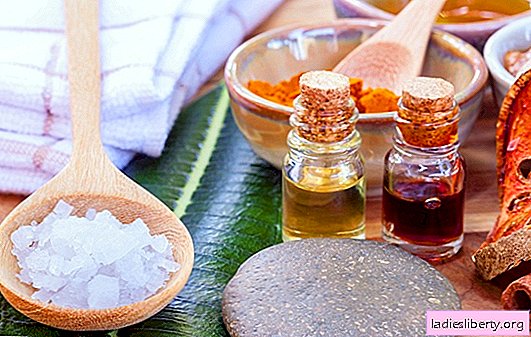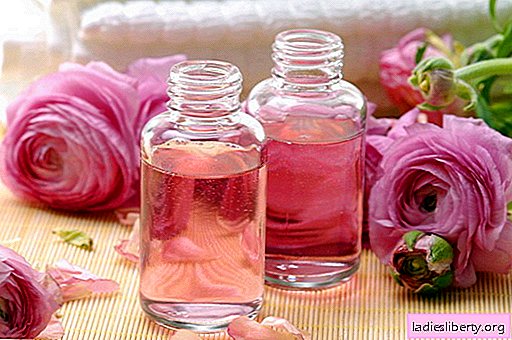
Pumpkin is a melon and unpretentious crop rich in vitamins and minerals. It contains much more carotene than carrots. They grow it almost everywhere. Among gardeners, pumpkin is valued for its ability to maintain its palatability throughout the shelf life. In order for her not to lose her nutrients, the pumpkin needs to be removed from the garden in time. Frozen vegetables are poorly stored, and under good conditions they will lie all winter and will not deteriorate.
Harvesting different types of pumpkins
Pumpkin is a rather cold-resistant culture, so they remove it from the beds of the latest. When and how to do it right? Today, gardeners grow many varieties of this vegetable, which differ in maturity. The ripeness of the crop also depends on weather conditions. When to remove early pumpkin varieties from the garden, and when late ripe - this question is not only asked by beginners.
• Early ripe pumpkins are ready for harvesting after 120 days from the appearance of seedlings. Such a vegetable is not very rich in carotene, its pulp is fibrous, but the seeds are very useful. They start cleaning in the second half of August. In September, the entire crop should be harvested. The vegetable is stored for a relatively short time.
• Mid-season varieties can be harvested after 130 days from germination. These species are mainly large-fruited, rich in vitamins and well stored. However, delaying the cleaning is not worth it. In the conditions of the Moscow region, the pumpkin is harvested in September, leaving it in a dry room for 30 days to ripen.
• Late-ripening nutmeg varieties are harvested by the very last, approximately 150 days after germination. In the south of the country they ripen well on lashes, but in other regions they start harvesting 2 months before frosts. Fruits are stored for 5 months.
Important! If you were late for harvesting the vegetable, and it came under freezing conditions, then it should be put into processing. Do not store frozen pumpkin.
The timing of the harvest depends on the weather forecast and the geographic region of the country. If in the Crimea it is possible to postpone fruit harvesting until October, then in the conditions of the Moscow Region and Siberia, pumpkin is harvested already in early autumn. When choosing a date, weather conditions remain an important point. If frost is coming, then you need to hurry with the cleaning. The most recently removed decorative varieties of pumpkins that are not used for food.
How to determine the ripeness of a pumpkin
Any vegetable, regardless of variety and early maturity, has external signs by which it is possible to determine the moment of maturity. Knowing these subtleties, any summer resident will start harvesting in time, which will save most of it.
1. By carefully looking at the petiole, you can find that it has become hard, has lost its juiciness.
2. Ripe pumpkin takes on an orange or yellowish color. Its edges are clearly visible.
3. The degree of maturity can be checked with a fingernail. If the peel of the fetus is difficult to damage, then it is ripe enough.
4. At the end of the growing season, the lashes and foliage of the plant die off.
5. Ripe pumpkin is covered with a matte coating and rings with a light cotton.
If the crop corresponds to the characteristic features described above, then the pumpkin is removed from the garden, so it will be better preserved, will not lose its beneficial properties.
Fruits that have not yet fully ripened are best sent for ripening in a dry room. It is impossible to store fruits with not formed peel. It is better to prepare delicious homemade preserves from them.
Proper pumpkin care before harvesting
Regardless of which variety is grown in the garden, it is necessary to protect the fruits from spoilage and rot before harvesting.
In wet weather, when the fruits lie in contact with the ground, the peel rots. Inexperienced summer residents try to put the vegetable into processing. But this cannot be done. The fact is that changes occur in the pulp, and the use of such a fruit leads to poisoning.
To preserve the harvest, pumpkins are placed on the knoll, under them, boards are pushed. In rainy weather, you need to cover the fruits with a film. In the last month before harvesting, watering the beds is stopped.
How to remove a pumpkin from the garden
There is no doubt that the most nutritious and useful is the vegetable that has ripened right on the whip. But if the weather conditions get worse, then cleaning is carried out immediately. Ripening pumpkins will be already in the room.
For harvesting, you need to choose a dry, dry day. In rainy autumn, after harvesting, the fruits are dried in a ventilated area. Pumpkins are cut very carefully so that they do not fall and the bark is not damaged. Those fruits that will be laid for storage are cut off with a stem, the height of which is up to 5 cm.
After harvesting, the crops are sorted. Fruits with cracks and spoiled peel are eaten primarily or allowed for processing. The fact is that microbes penetrate through the cracks, which lead to damage to the pulp: it grows moldy and rots.
The sorted crop is dried, the remains of the earth and dry foliage are removed. After which it is placed for ripening in a dry indoor storage, where the temperature is maintained up to 30 degrees. Under such conditions, the fruit peel gradually hardens. The ripening of the crop is carried out up to 10 days to a month.
How and where to store pumpkin
After ripening, the crop is sorted again, discarding fruits with soft peels. Next, the pumpkins are stored.
Important! The fruits are stored the longest, the diameter of which is not less than 15 cm.
For long-term storage of pumpkins, a dry room is chosen, where the air temperature is maintained within 10-13 degrees and good ventilation is equipped. Directly in the storehouse, vegetables are laid out in one layer, preventing their contact with moisture. It is better if shelves with shelves will be used for pumpkin storage, as in the photo. The distance from the floor to the first shelf should be at least 15 cm. With this storage, the crop will be well ventilated from all sides, which will ensure its safety.
A good store should be well protected from rodents and fungal infections. It is important that condensation does not form on the fruit during storage.
In the winter months, the pumpkin is periodically checked, fruits with a softened peel are rejected. This suggests that the pumpkin began to deteriorate.
Pumpkin Harvest Dates
Growing different varieties of pumpkin, you can constantly eat it and replenish the body with the necessary vitamins. To preserve the crop, it is important to know not only the storage conditions, but also the timing.
The harvest of early pumpkin varieties is least stored: Almond 35, Freckle, Gribovskaya bush. These fruits should be eaten very first. The shelf life of such varieties is not more than a month. Further, the flesh loses its palatability, and the seeds begin to germinate inside the fruit.
Middle and late nutmeg pumpkin varieties are well stored all winter, without loss of taste: Pearl, Nutmeg, Vitamin, Smile, Baby. The average shelf life of the fruit reaches 5-6 months, after which the flesh loses its properties and becomes fibrous, tasteless.
To summarize
It is necessary to carry out pumpkin cleaning from the garden correctly, taking into account not only the growing time, technical characteristics of the fruit, but also weather conditions. In each particular region, the time for cleaning is adjusted according to these indicators.











